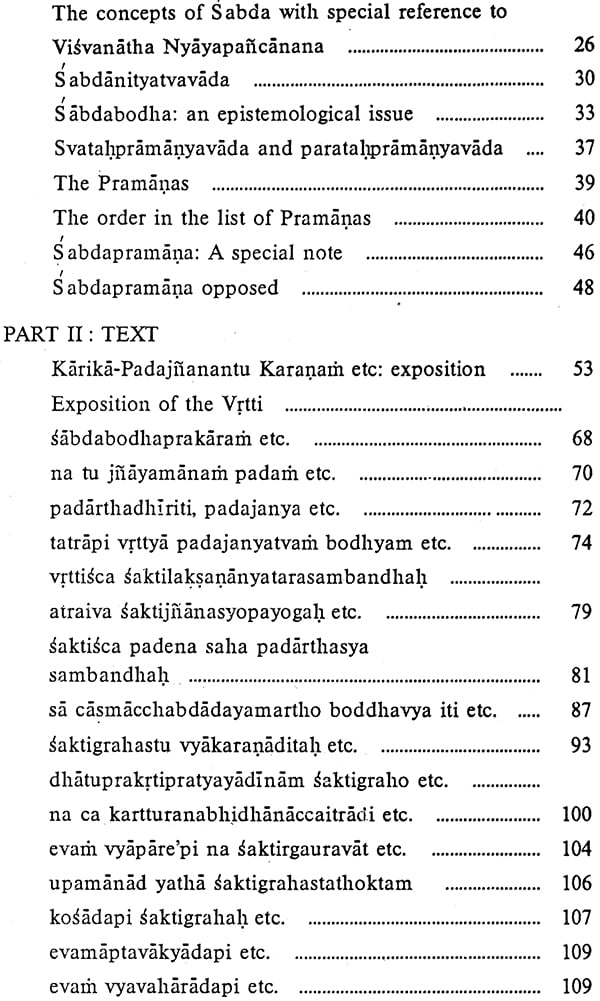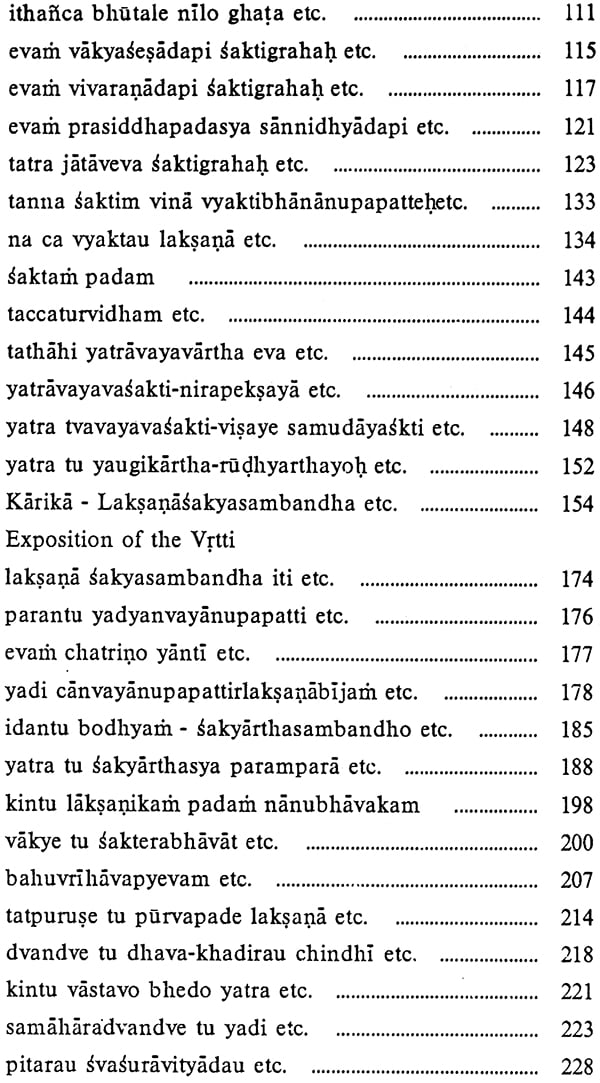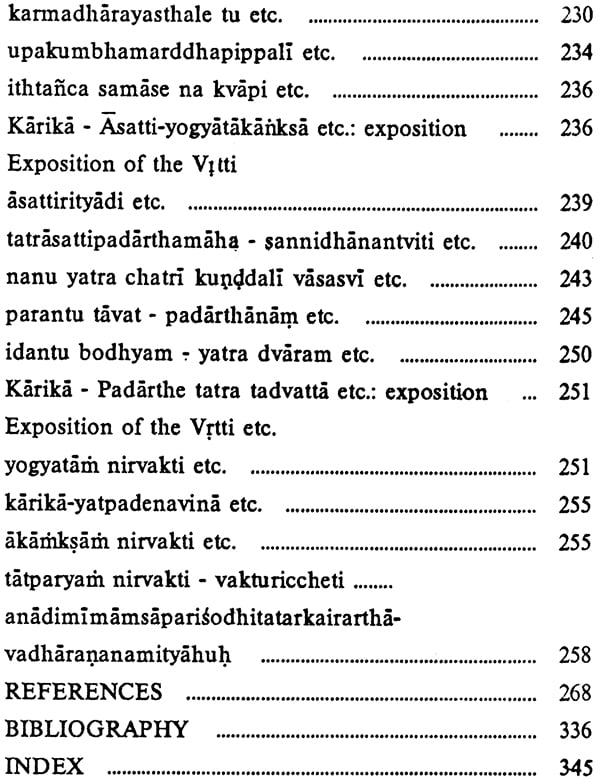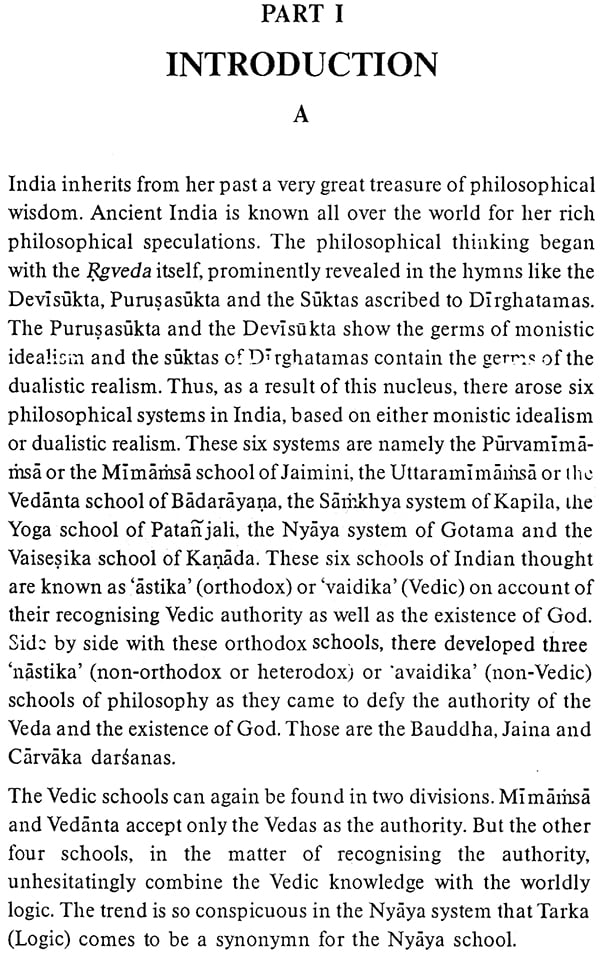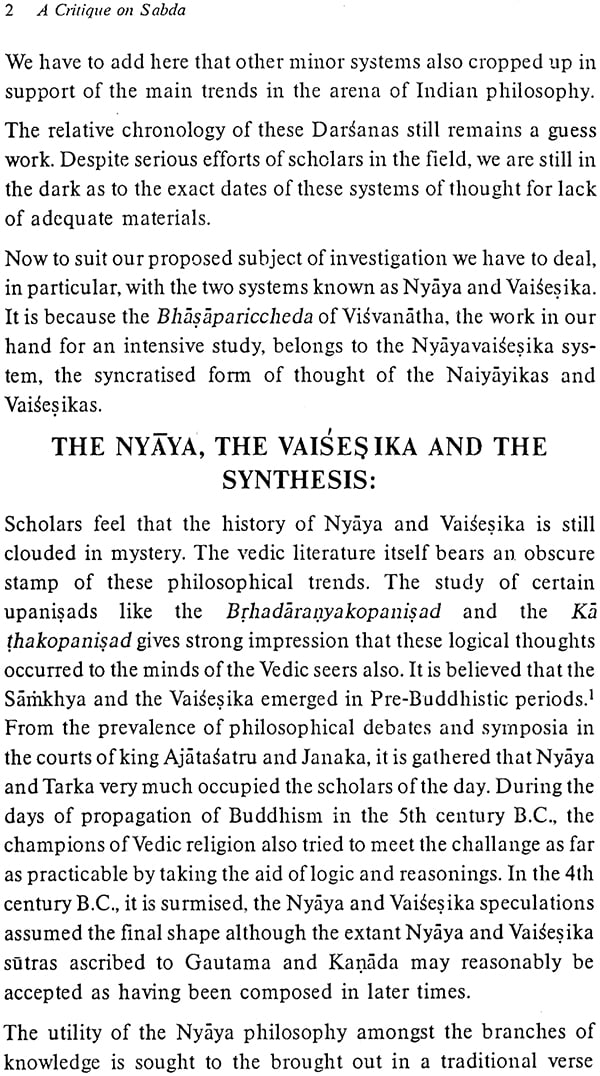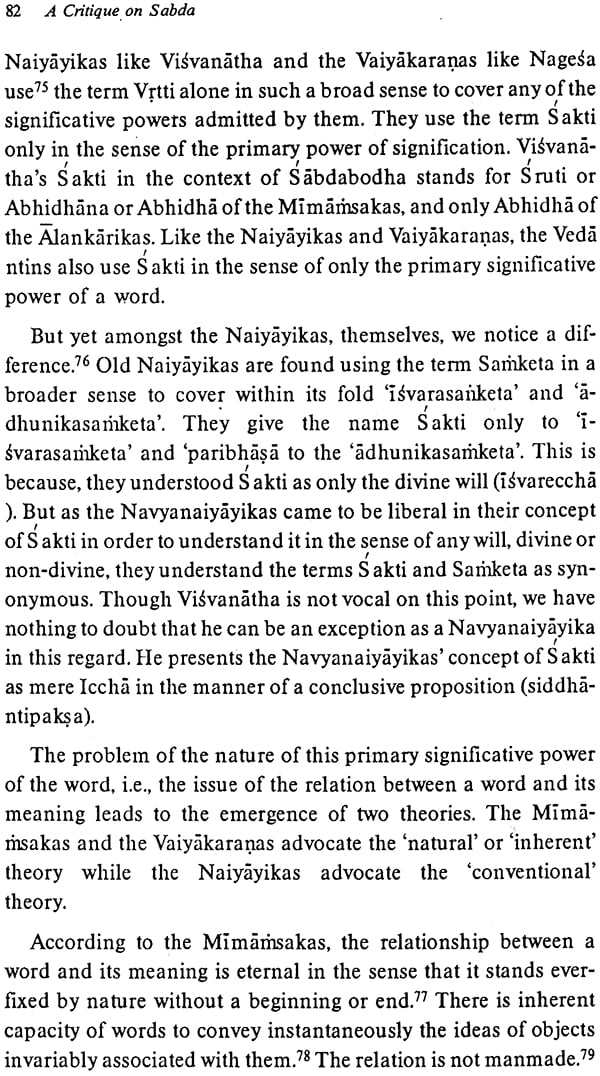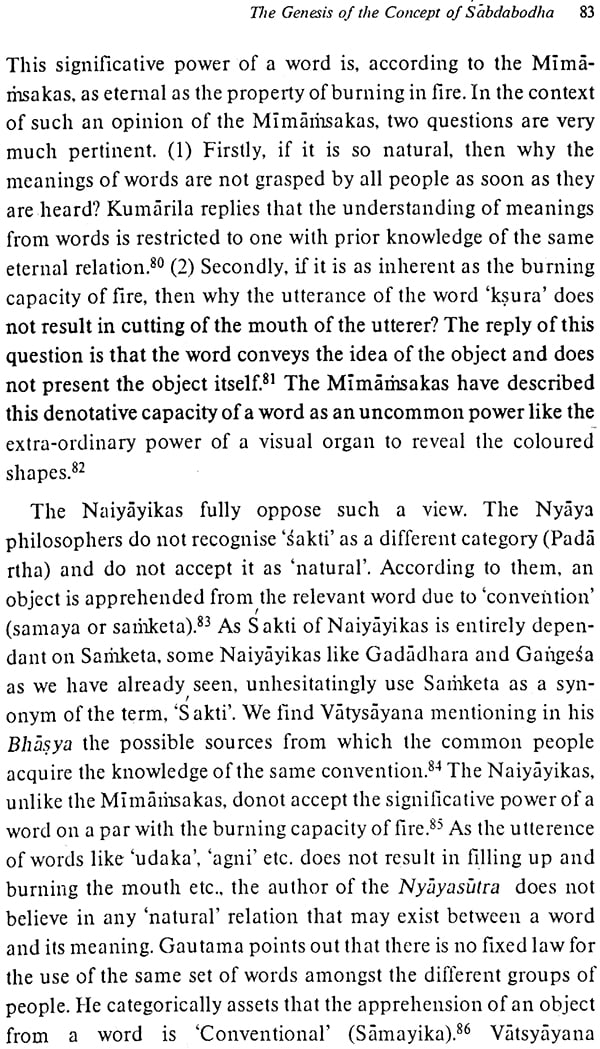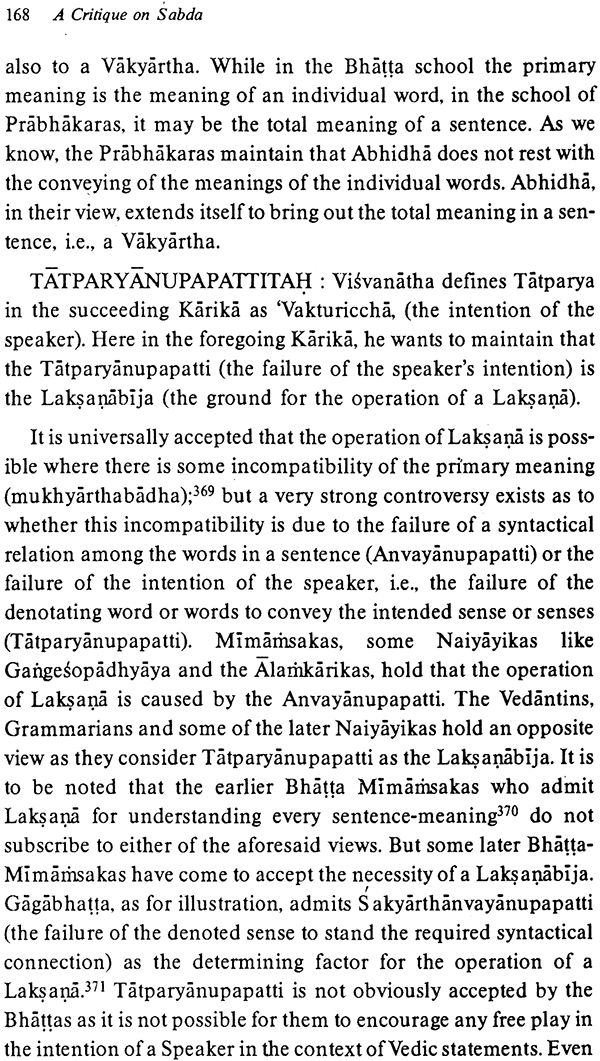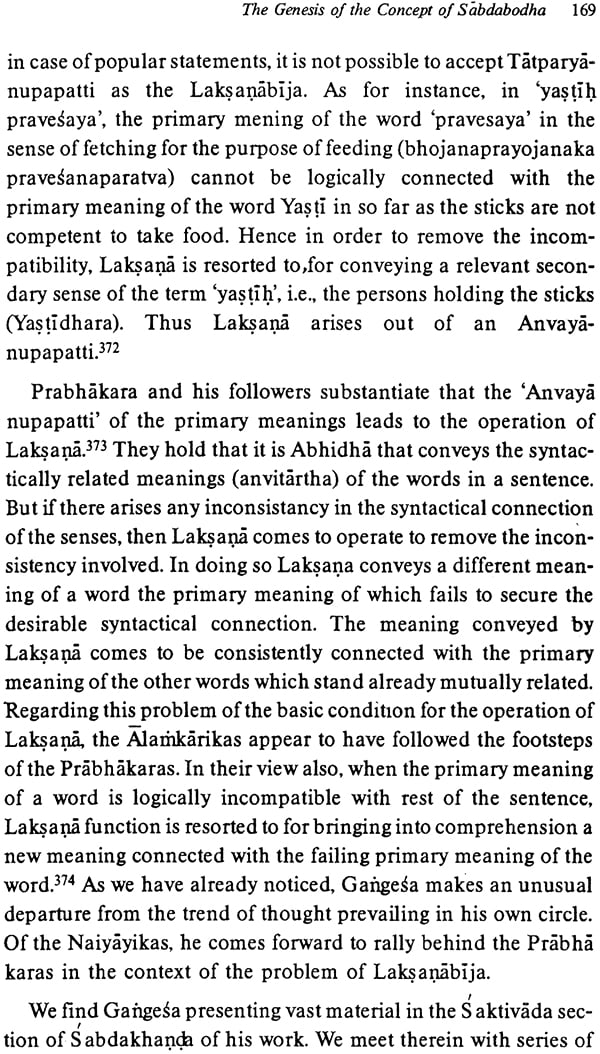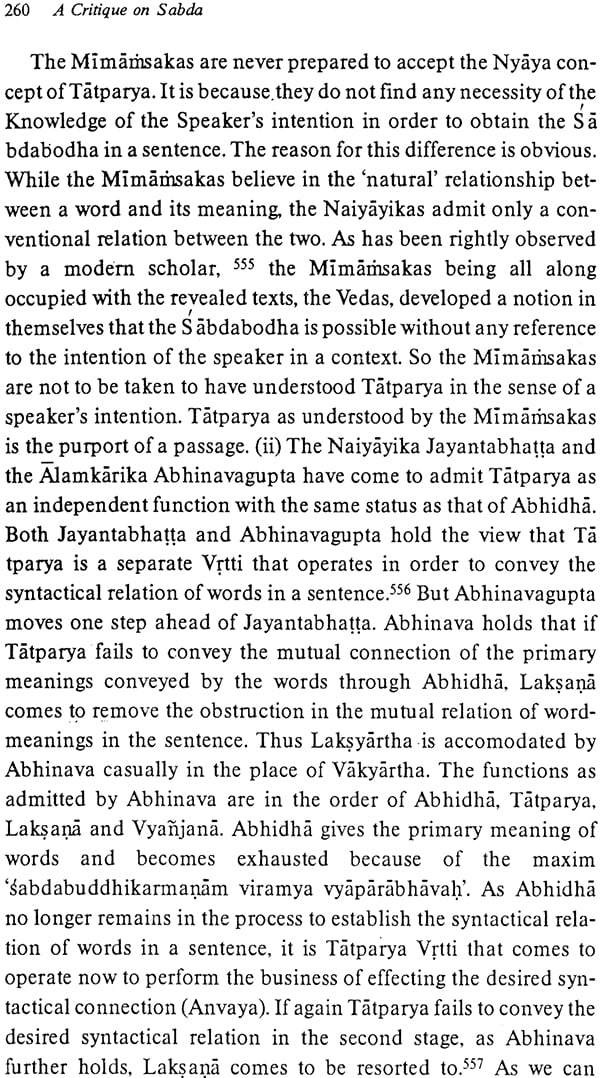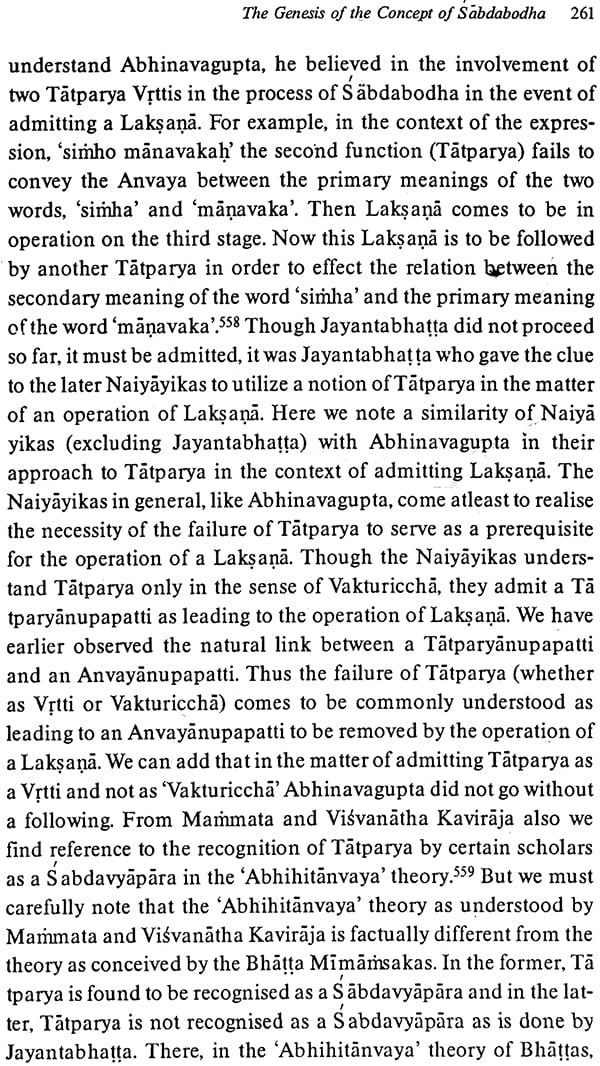
A Critique on Sabda - Based on Visvanatha's Bhasapariccheda (An Old and Rare Book)
Book Specification
| Item Code: | NAS158 |
| Author: | Ashok Kumar Goswami |
| Publisher: | Sri Satguru Publications |
| Language: | English |
| Edition: | 1991 |
| ISBN: | 8170302471 |
| Pages: | 368 |
| Cover: | HARDCOVER |
| Other Details | 8.50 X 5.50 inch |
| Weight | 510 gm |
Book Description
The present book is a critical exposition of the Sabdakhanda of the Bhasapariccheda of Visvanatha Pancanana. The book is divided into two parts. The first part comprises of the Introduction which again consists of sub-divisions which are devoted to a general survey of Indian philosophy with special reference to the Nyaya- Vaisesika school; the details about the Bhasapariccheda; and lastly with the Pramanas and the various aspects of the concepts of Sabda and Sabdabodha.
The second part of the present work is an exposition of the text of the Sabdakhanda. Here the Karika is given first, then it is followed by a translation and a general exposition. Then the relevant Vritti is presented piecemeal followed by critical and comparative exposition word for word.
Dr. Ashok Kumar Goswami is presently in the Department of Sanskrit, Gauhati University, Assam.
I had the pleasure and privilege of studying the Bhasapariccheda as a text book in the M.A. Class of the Gauhati University during the years 1959-1961. During that period I developed a keen interest in epistemological studies. Later on I had the scope to teach the second chapter of the Sahityadarpana in the M.A. classes of the Gauhati University.
In respect of the contents of the Sabdakhanda of the Bhasapariccheda and the second chapter of the Darpana, there are a number of points of agreement and disagreement. As I explained things to my students and tried to reconcile the trends of these two different texts, I came to realise that the Sabdakhanda itself requires a more comprehensive exposition. Thus, I had been toy- ing with the idea of studying the said Sabdakhanda more seriously as a research project for over a decade or so. But the idea could not be more promptly translated into action mainly because of physical disabilities.
The present work is an abridged form of my Ph.D. thesis ‘The Sabda Khanda Of The Bhasapariccheda’.
The scheme of the present work is somewhat unusual in as much as it is in the form of a running commentary written in English. It is divided into two broad parts. The first part com- prises of the Introduction which again consists of three sub- sections A.B. & C. The section A is devoted to a general survey of Indian Philosophy with special reference to the Nyaya-vaisesika school. The section B is devoted to the details about the Bhasa pariccheda and the section C is concerned with the Pramanas and the various aspects of the concepts of Sabda and Sabdabodha.
The second part of the present work is an exposition of the text of the Sabdakhanda. Here the Karika is given first, then it is followed by a translation and a general exposition. Then the relevant Vrtti is presented piecemeal. Each piece of the Vrtti is followed by critical and comparative exposition word for word.
I have no words to express my deep sense of gratitude to my preceptor Professor Dr. Mukunda Madhava Sharma, M.A., Ph.D., D. Litt, Kavyatirtha, for his ungrudging guidance and untiring help offered to me during the preparation of my disertatation. I must put on record that the present work is entirely an outcome of his constant guidance, pressure and inspiration.
I have been suffering from an obstinate type of eye-disease since childhood. Ever since the days of my preparation for the Matriculation Examination the books had to be read out to me by my friends and relatives. In case of the present work also I received the help of a host of students, of whom I must never fail to name with a deep sense of gratitude, a few such as Dr. Rajendra Nath Sharma, now an esteemed colleague and Shri Dipak Kumar Sharma, A.C.S.
I remain extremely thankful to my wife Smt. Beena Devi Goswami, M.A. LL.B for relieving me of all the domestic responsibilities during the period of my more serious studies.
Sincere thanks are also due to Messrs Indian Books Centre, Delhi for kindly accepting the work for publication.
I shall feel myself amply rewarded if the works comes to serve the purpose of readers in the field. Let me now conclude with the select saying of the great poet Kalidasa,—
‘a paritosad vidusam na sadhu manye prayogavijnam’.
**Contents and Sample Pages**

